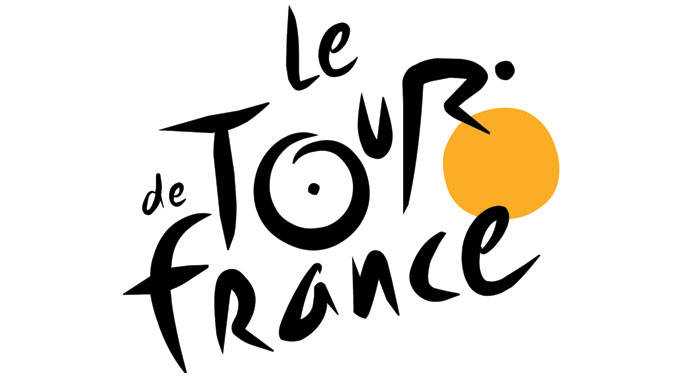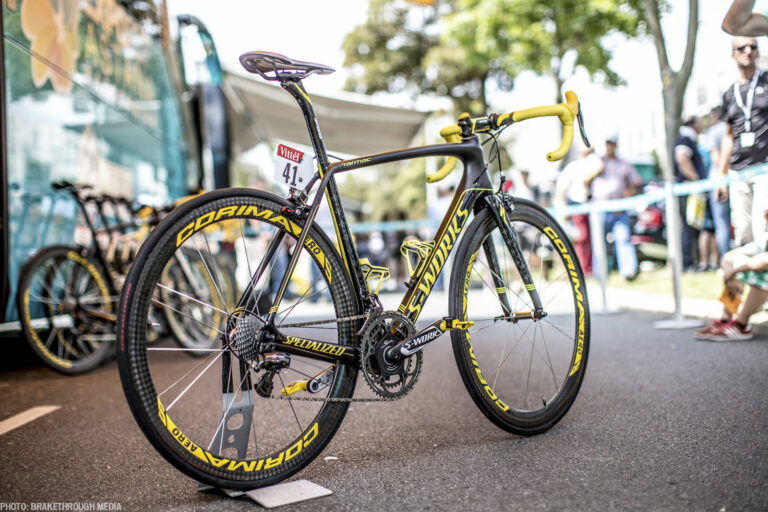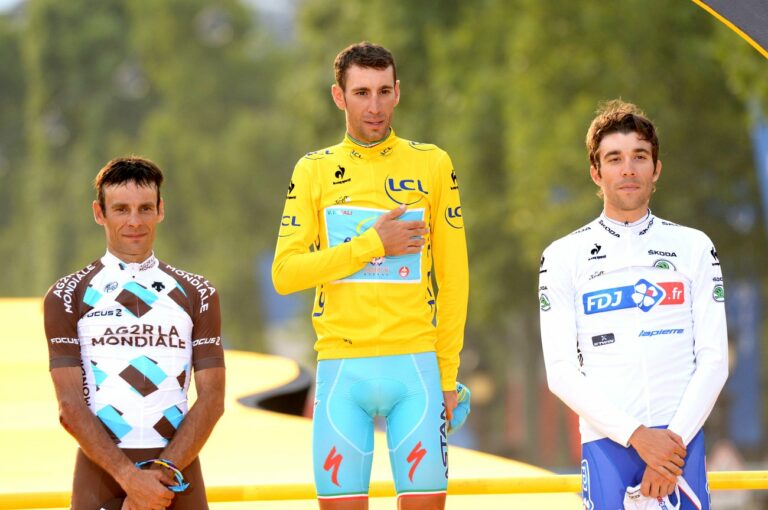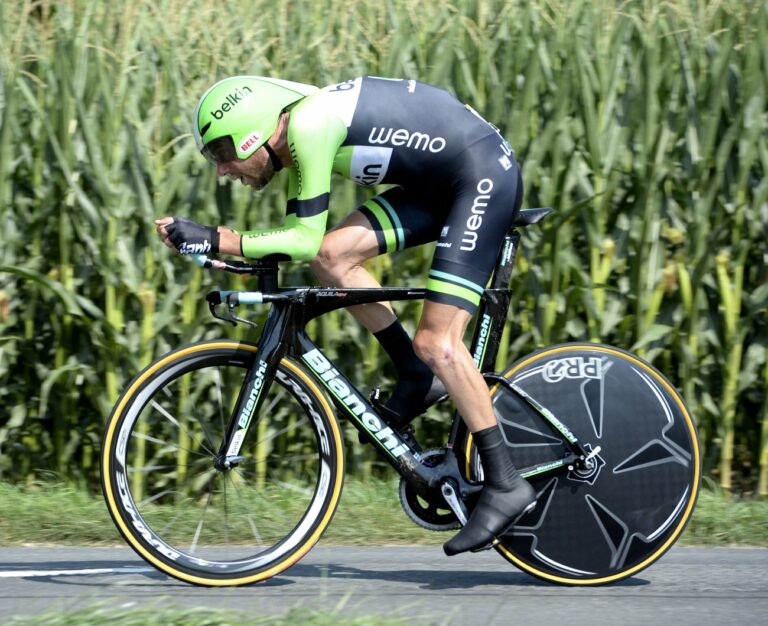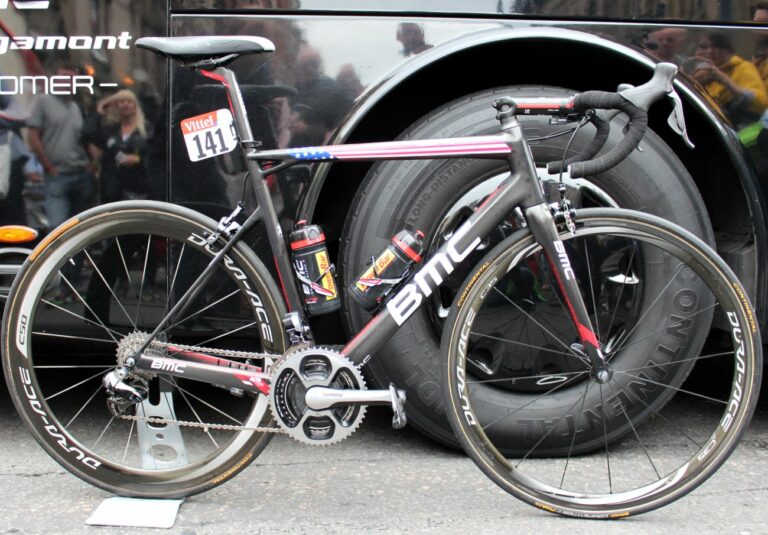It was a stage on which descending and crashing took centre stage following the forced withdrawal, with a broken tibia, of Alberto Contador (Tinkoff-Saxo).
Jakob Fuglsang (Astana) said the speed El Pistolero significantly outdid his and team-mate, and eventual stage winner, Vincenzo Nibali’s pace.
And after Contador followed fellow former champions Chris Froome (Team Sky) and Andy Schleck (Trek Factory Racing) out of the race, it was left to Nibali to claim victory and the yellow jersey.
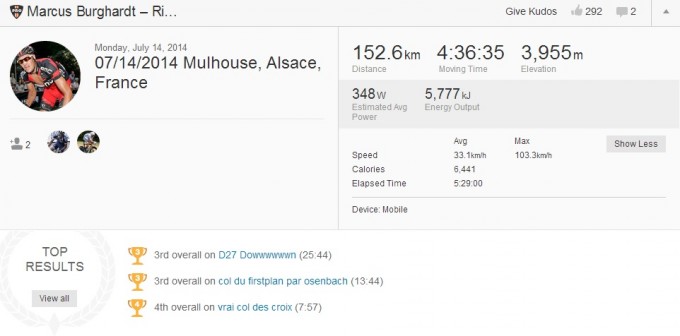
Behind him, however, two more equally interesting stories were playing out – Thibaut Pinot finishing second, his best Tour result since stage victory in 2012, and Marcus Burghardt continuing to fight a separated shoulder as team-mate Tejay van Garderen reignited his GC bid.
Both Pinot, who suffered from a phobia of descending in 2013, and the injured Burghardt use Strava and it is possible to track their efforts on the gruelling mountainous stage.
And it is therefore possible to see the phenomenal effort of the German’s ride, battling up some of the most gruelling ascents in the Vosges in spite of his injury.
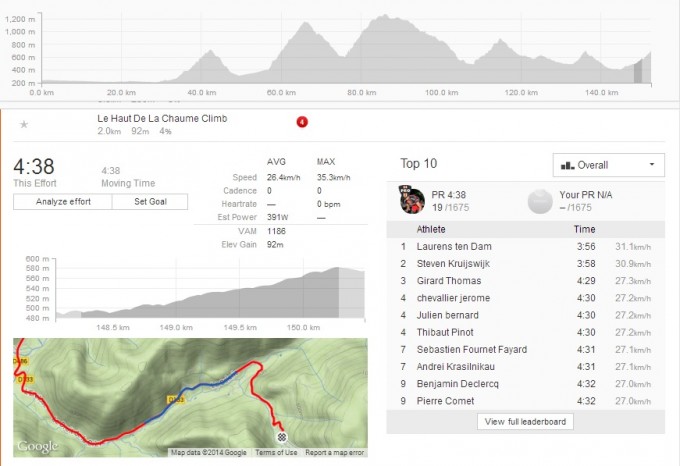
Though unable to challenge the times posted on the final ascent of La Plance des Belles Filles of rivals such as Laurens Ten Dam (Belkin), the German’s average speed of 26.4km/h allowed him to limit his losses.
Strava estimates the power output required to produce those numbers to be 391 watts, too, highlighting the inherent toughness of the WorldTour’s elite cyclists.
Pinot, too, should be commended for battling back after his career took a huge backwards step in 2013.
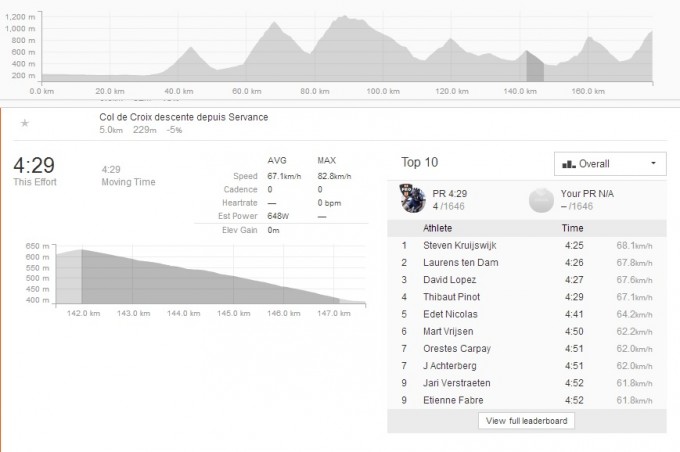
Though only one of the descents en route is available to view as a segment on his ride, the Col de Croix, Pinot’s average speed of in excess of 67km/h certainly does not reflect a man fighting fear.
Tackling the descent just four seconds slower than the fastest Strava pro, Belkin’s Steven Kruijswijk, Pinot set himself up to climb into second on the stage and back into contention for a podium spot overall.

